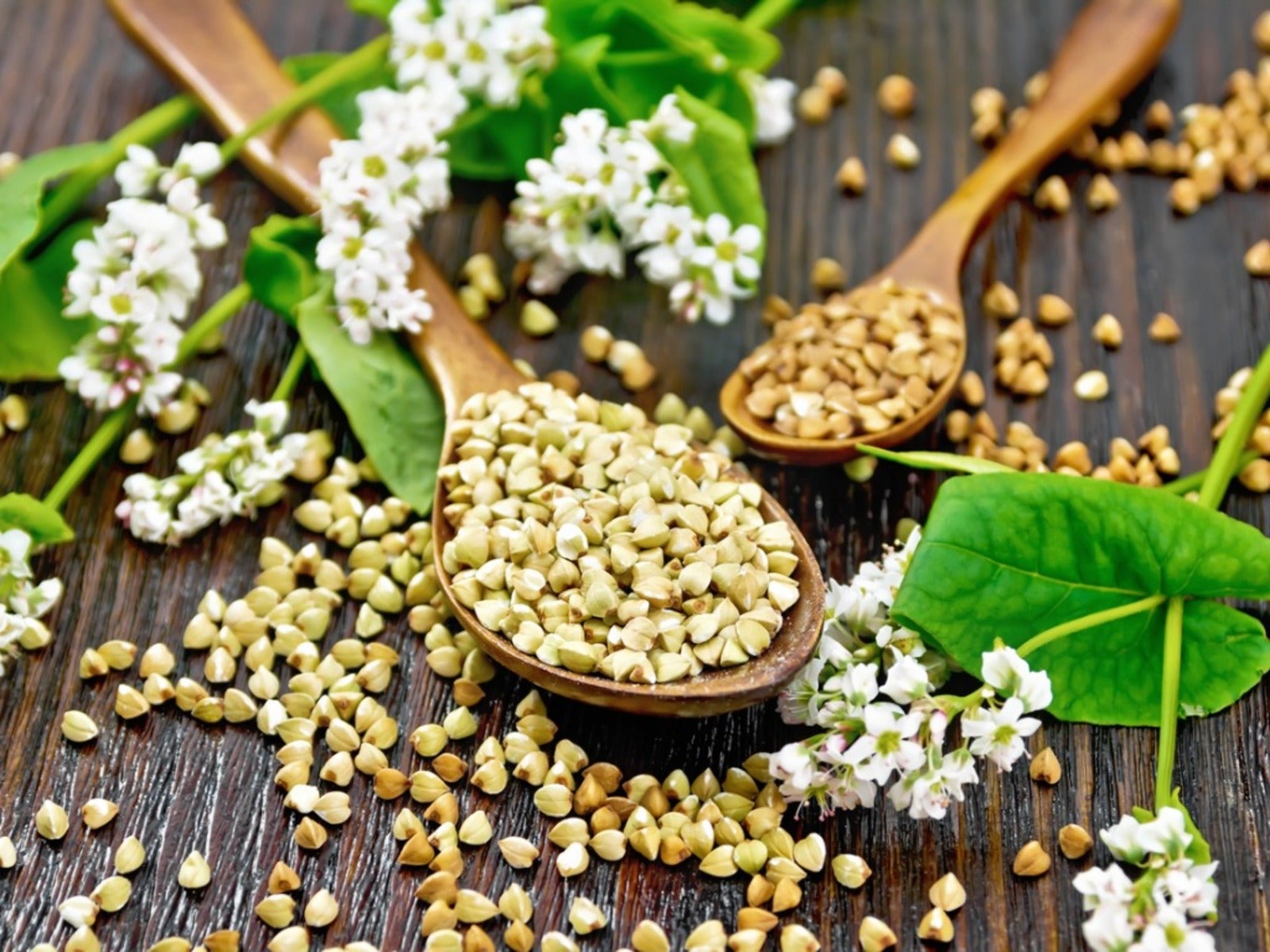How To Harvest Buckwheat From The Garden


Want to know how to harvest buckwheat? We'll tell you everything you need to know, from timing to threshing to storing.
What Is Buckwheat?
Buckwheat, a gluten-free grain which is popular in pancakes and breads, can be easily cultivated in the home garden. It's a fast growing plant that produces seeds within 12 weeks. Plus, buckwheat harvesting can be done by hand with minimal equipment.
When to Harvest Buckwheat
Buckwheat is an indeterminate plant, which means it continues producing seeds until it is killed by frost. Thus, not all the seeds will mature and ripen at the same time. This makes buckwheat more difficult to harvest than most grain crops.
Commercial growers harvest their fields of buckwheat when 75% of the seeds have reached maturity. This requires careful inspection of the crop, since recently formed hulls will be empty and should not be counted. Once the crop is ready for harvest, farmers either combine the crop directly or cut and allow the plants to dry in the field before threshing.
How to Harvest Buckwheat in the Garden
As a home gardener you have several options for harvesting this crop. Buckwheat seeds ripen at the bottom of the plant first.
1. Harvest by Hand
One method is harvesting buckwheat by hand as the seeds mature. This can be tedious and should be done on a regular basis to avoid losses from seed shatter.
2. Cut and Dry
Gardeners can also cut and dry their crop in the garden, much the same as commercial growers do. Ideally, this is done when 75% of the seeds have reached maturity. Begin checking the plants 10 weeks after sowing and only count hulls which contain seeds.
Sign up for the Gardening Know How newsletter today and receive a free copy of our e-book "How to Grow Delicious Tomatoes".
For this method, the only buckwheat harvesting equipment you need is a cutting tool. Hedge shears or a sickle will work fine. To avoid seed shattering, cut the plants when they are moist with dew. Allow the plants to fully dry in the garden before gathering.
3. Wait for Frost
The third option is to time the buckwheat harvest in conjunction with the first frost in the fall. Buckwheat is a cold-sensitive plant. Once frost kills the plant, the seeds will mature more uniformly. The plants can then be cut and dried. However, it can be difficult to accurately estimate when frost will arrive.
What to Do After Harvesting Buckwheat
Threshing and Drying Buckwheat
When buckwheat plants are dry, the seeds can be dislodged from the plant by threshing. An antique or homemade flail can be used, but modern gardeners find smacking the dried plants against the inside of a clean trash can works just as well.
Plant debris in the seeds can be removed by pouring the seeds back and forth between two containers in front of a fan. Clean seed may need to be air-dried or placed in a food dehydrator set at under 110 degrees F (43 C) to complete the drying process.
Grinding Buckwheat
While wheat and other grains can be ground whole using a blender or coffee grinder, buckwheat hulls tend to be bitter and are best removed with a grain mill. Hand-cranked grain mills are relatively inexpensive.
Is Buckwheat an Allergen?
Note that buckwheat is a common food allergen in humans. Care should be taken when introducing it into the diet or when consuming large quantities of buckwheat products. A buckwheat allergy can quickly lead to anaphylaxis in sensitive individuals. It is also known to cause photosensitivity, so be careful!

Laura Miller has been gardening all her life. Holding a degree in Biology, Nutrition, and Agriculture, Laura's area of expertise is vegetables, herbs, and all things edible. She lives in Ohio.